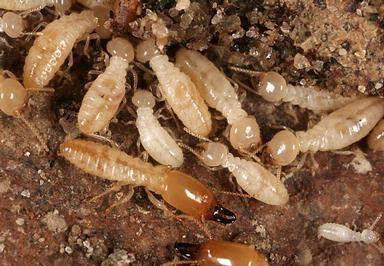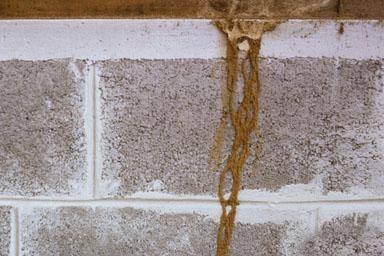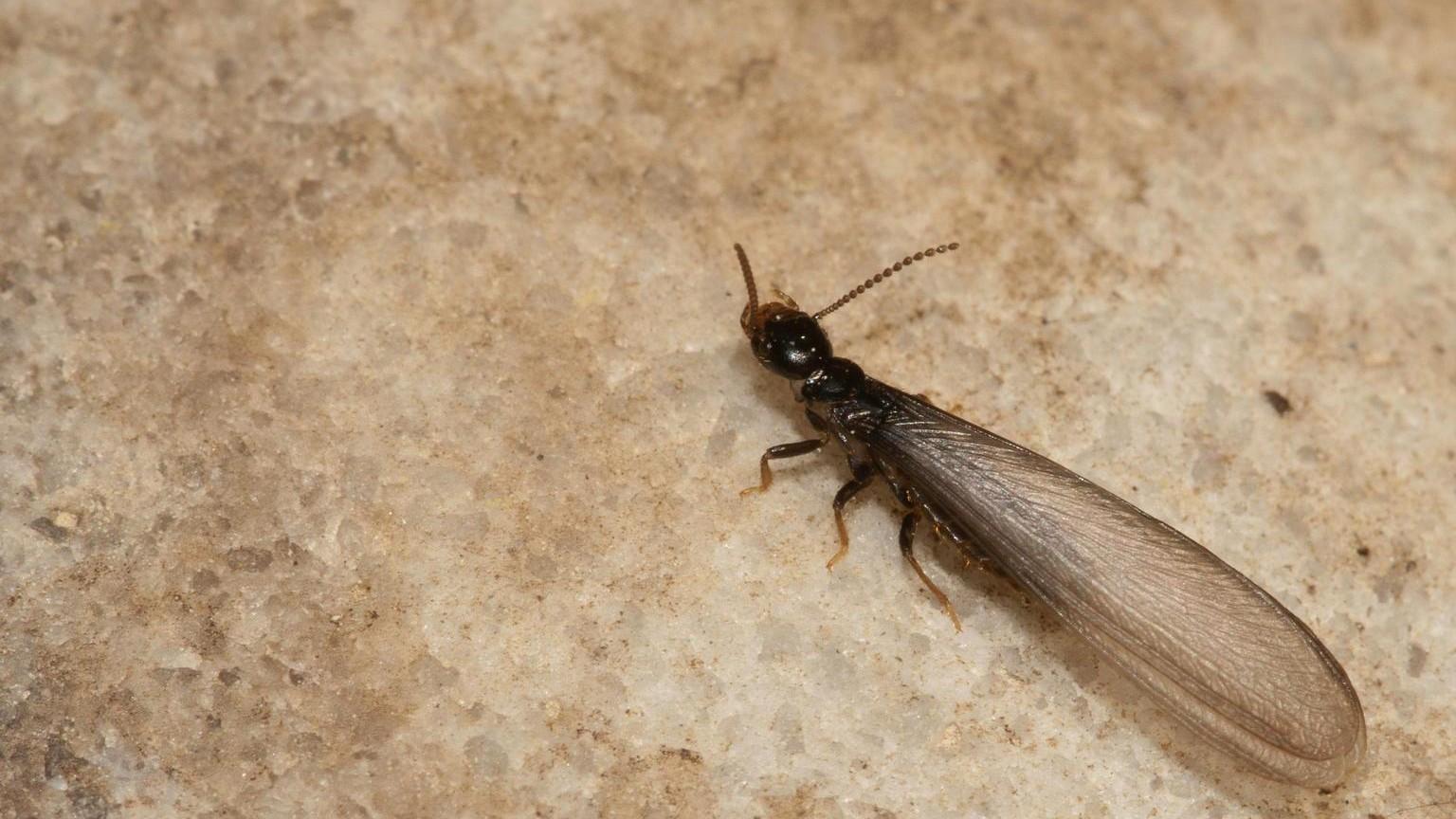About termites
-
Termites native to Maryland are subterranean (genus Reticulitermes).
-
They are social insects, living in colonies of up to several million individuals.
-
The structure of a mature colony is complex, with one or more central "headquarters," which are normally found with a food source, such as a buried stump or log on the forest floor.
-
The colony centers are connected to a variety of other food sources by a network of underground tunnels.
-
A single colony can use food sources that are more than 200 feet apart.
-
Members of termite colonies develop into castes, or groups associated with the division of labor within the society.
-
Termite workers are typically 1/4 inch long, cream-colored and eyeless. They navigate and perform all of their duties using only tactile and chemical forms of communication.
-
Termite workers eat wood, and they can move into a piece of timber in larger numbers.

Eastern subterranean termite (Reticulitermes flavipes) workers and soldiers. Photo: Gary Alpert, Harvard University, Bugwood.org
-
Some workers carry food back to immatures and reproductives, maintaining a network of food transfer and communication among members of the colony.
-
Soldier termites make up 2 to 5 percent of the population. They accompany workers to food sources and defend the colony against ants and competitor termites.
-
Termite colonies have a limited number of reproductives, which cluster in chambers in wood or underground. They concentrate their efforts on egg production, and they are fed and tended to by an entourage of workers.
-
Periodically, mature termite colonies produce a brood of winged reproductive offspring called swarmers or alates. These winged termites fly in large numbers to disperse and initiate new colonies. Flights of termite alates or piles of shed wings are often the first sign to the homeowner of an infestation. Alates are not a danger to structures; most die of dehydration if they fly inside.
-
A flight of alates indicates a healthy termite colony nearby, and the problem should be investigated, especially if swarmers are found indoors.
Termite detection and damage
Even very active infestations can be difficult to detect because of the cryptic habits of these insects. Subterranean termites tunnel inside wood, leaving an outer shell that may appear entirely normal from the exterior. If you notice any of the following in your house, call a pest control operator for a professional inspection:
-
Dirt tunnels or "shelter tubes," typically about 1/4 inch wide but sometimes wider, on the foundation, along exposed wood, or dangling down from the ceiling; these are transit tubes built by termites.
-
Soil packed in cracks and crevices.
-
Piles of silvery, membranous insect wings, all about 1/4 inch long, on floors, window sills, or in spider webs.
-
Evidence of structural weakness, such as settling cracks or sagging floors.
-
Dark or blistered areas on wood paneling; blistered or peeling paint on wood (because of moisture under the paint from termite activity).

Shelter tubes made by subterranean termites (Reticulitermes sp.). Photo: USDA Forest Service - Wood Products Insect Lab , USDA Forest Service, Bugwood.org

Termite damaged wood. Photo: Gene Wood
If you have an active termite infestation, do not panic - to cause structural damage, termites must work in a home for quite a while. You can take weeks or even a few months to evaluate the problem and decide on a treatment program. A key element for the inspector is to determine where the termites are gaining access to the house. This knowledge can help in planning a treatment program and in making structural or landscape modifications that will prevent a re-infestation.
Winged termites and winged ants

Diagram courtesy of USDA Forest Service Archive, USDA Forest Service, Bugwood.org
Termite swarmers (winged termites) may be distinguished from winged ants by the following characteristics:
-
Termites have straight antennae; ants have elbowed or bent antennae.
-
Wings on the termites are all the same size; the front pair of wings on ants are longer than the rear wings.
-
Termites do not have a constricted waist; ants have an obviously narrow waist.
-
The body of a winged termite is about 1/4 of an inch long and black. Winged ants may be of various sizes, and black, brown, or reddish in color.
Ants and Termites: How to Tell the Difference
Selecting pest control companies and pesticides
-
Shop for a pest control company as you would for a doctor or any other professional service. Begin with recommendations from friends and neighbors.
-
Most companies provide free estimates, at which time they discuss a treatment plan, cost, and of equal importance, warranties.
-
Compare recommended treatment programs and estimates among several companies.
-
A number of termiticides are registered for termite control; the use of different compounds and formulations varies among companies. Companies should fully disclose information on the chemical that they will be using in the treatment.
-
Companies that are members of the Maryland Pest Control Association and the National Pest Control Association have access to all current treatment practices. You can check a company's reputation by calling the Better Business Bureau.
-
Make certain that the company has an active certification license from the Maryland Department of Agriculture Pesticide Regulation Section.
-
If you have had a termite problem, it is wise to purchase a contract that includes an annual inspection and re-treatment if necessary. Termite control is difficult. The best company can do a good job and still not completely solve the problem.
Read more about Eastern subterranean termites on Bug of the Week, by Dr. Michael J. Raupp, University of Maryland.
